SSZT280 june 2020 DRV8343-Q1 , DRV8702-Q1 , DRV8873-Q1 , DRV8874-Q1 , DRV8876 , DRV8876-Q1
An internal combustion engine (ICE) is a mechanical system that has been around since the 19th century (Figure 1). It’s amazing how it works, considering that it only takes fuel to generate thousands of horsepower and make a car go from 0 to 60 mph in under 3 seconds. But all good things must come to an end; stricter government standards such as Tier 3, Euro 6 and China 6a are requiring exported automobiles to reduce emissions to minimal levels. In response, the automotive industry is electrifying (literally) to create electric vehicles (EVs) and hybrid electric vehicles (HEVs) that have electric subsystems inside the conventional ICE.
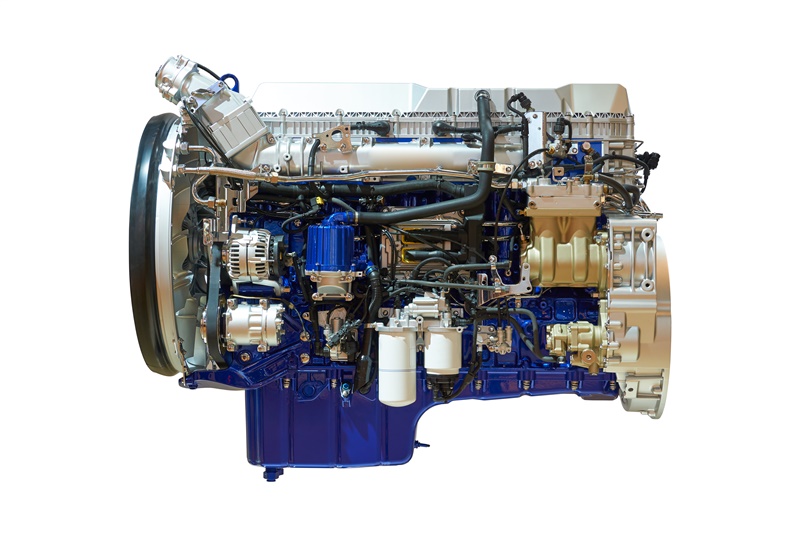 Figure 1 A conventional ICE
Figure 1 A conventional ICE| View our Automotive 12-V to 24-V Engine Load Interface Reference Design. | |

|
 Ready to design?
Ready to design?
|
But wait, how can you electrify an engine?
Well obviously, you can’t electrify the combustion process itself. However, the rest of the engine platform has a myriad of engine sensors to continuously monitor system parameters such as temperature, position and exhaust (Figure 2). The sensors send data to the engine control unit (ECU) to calculate the engine’s current performance and compare it to its desired performance. Solenoids, relays and DC motors are controlled by the ECU, to open or close valves and correct the amount of fluid flowing through the subsystem. This “corrects” the system performance, and the closed-loop cycle continues as long as the engine is running.
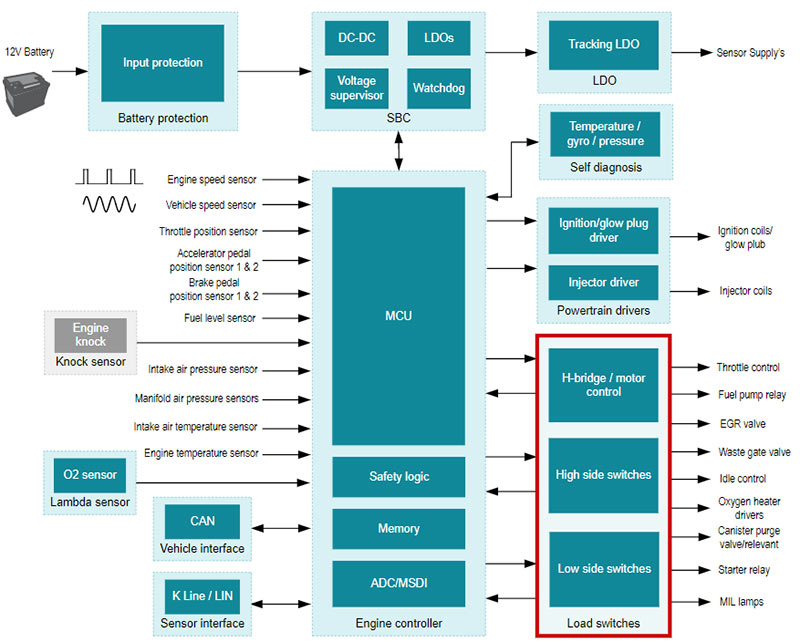 Figure 2 Block diagram overview of an engine platform design, including input sensors and output load switches (highlighted in red) that interface with the ECU
Figure 2 Block diagram overview of an engine platform design, including input sensors and output load switches (highlighted in red) that interface with the ECUBy using electric sensors and engine loads powered from the 12-V or 24-V battery, the engine reduces dramatically in size and limits emissions from the exhaust while continuing to utilize combustion as the main source of engine power. The main caveat to electrification in automotive applications is ensuring that all electrical components are automotive-qualified and have temperature grade 1 or 0. This allows for engineers to design systems that are compliant with International Organization for Standardization standards (ISO 26262) and be Automotive Safety Integrity Level (ASIL) certified for functional safety.
How can you drive these engine loads?
Solenoids and DC motors use a power metal-oxide semiconductor field-effect transistor (MOSFET) stage to drive inductive loads, with configurability for added protection. N-type MOSFETs can drive up to tens of amps when actuated, and the number of MOSFETs you’ll need depends on what configuration you want to drive your load.
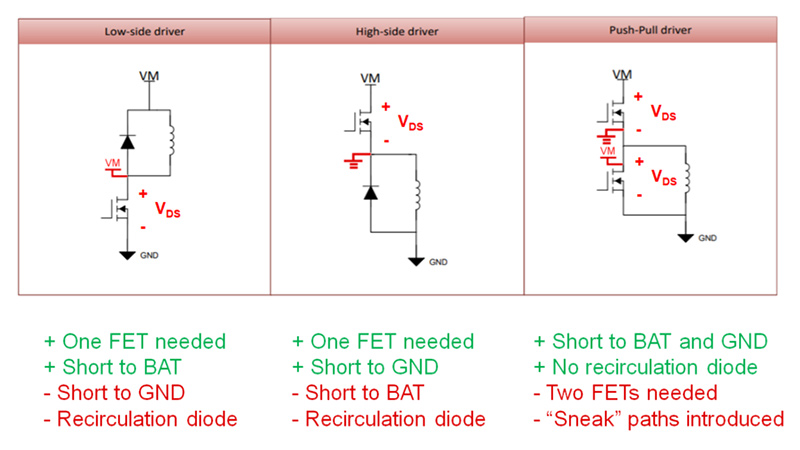 Figure 3 Trade-offs of various solenoid driver configurations
Figure 3 Trade-offs of various solenoid driver configurationsTo efficiently drive solenoids, you can use pulse-width modulation (PWM) signals from the gate driver to regulate current. It takes a larger amount of current to actuate the solenoid, but only a smaller amount of current to hold it in place. By switching to a lower PWM duty cycle once the solenoid is on, less power will dissipate through the solenoid windings to lower thermals and increase the longevity of the load.
An automotive device like the DRV8343-Q1 can drive up to six independent loads using independent MOSFET mode. It is rated for up to 60 V, integrates three current shunt amplifiers, and includes protection features and diagnostics for the implemented configurations. If you’re looking for a more integrated automotive solution, the DRV8876-Q1, DRV8874-Q1, and DRV8873-Q1 can each drive up to two independent solenoids and include integrated MOSFETs and current regulation. These devices are rated up to 37 V and have varying peak current and total RDS(on) values to support a wide range of solenoid currents.
Both solutions (Figure 4) are Automotive Electronics Council (AEC)-Q100 qualified for automotive applications and temperature grade 1 (-40°C to 125°C ambient).
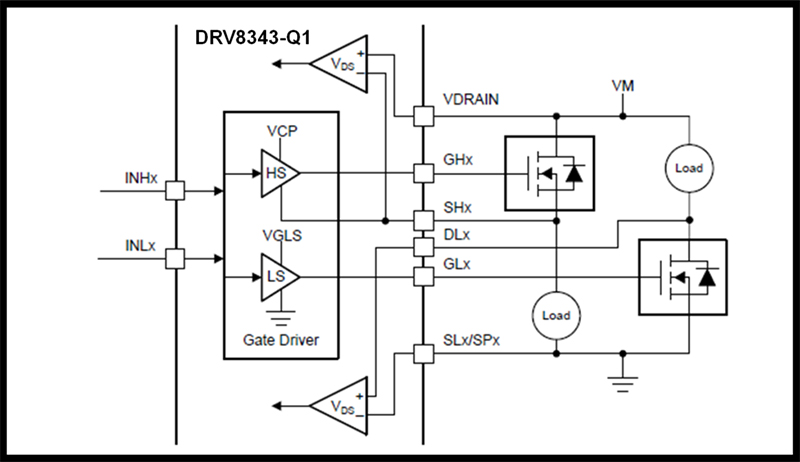
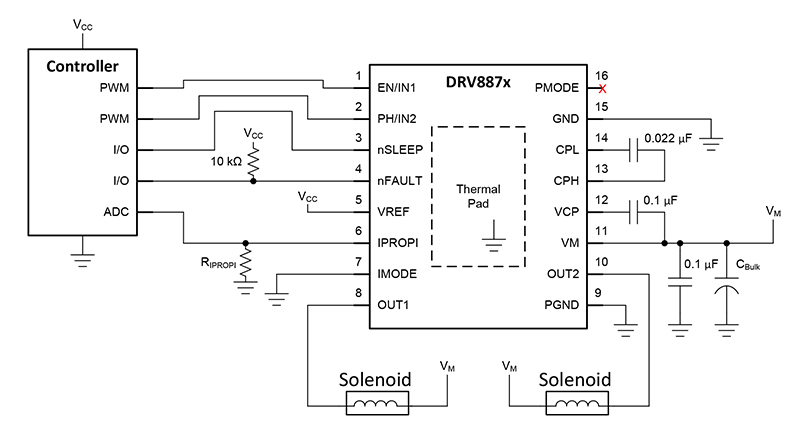 Figure 4 Driving solenoids using the DRV8343-Q1 or DRV887x-Q1
Figure 4 Driving solenoids using the DRV8343-Q1 or DRV887x-Q1If you’re ready to jump right into a design, check out our Automotive 12-V to 24-V Engine Load Interface Reference Design (Figure 5). This solution is rated for both 12-V and 24-V automotive systems and drives engine loads in four distinct configurations (HS driver, LS driver, HS + LS driver, and push-pull driver) with a microcontroller and the DRV8343-Q1 gate driver. The design also includes reverse polarity protection, integrates protection and diagnostic features, and is less than 16 square inches in size.
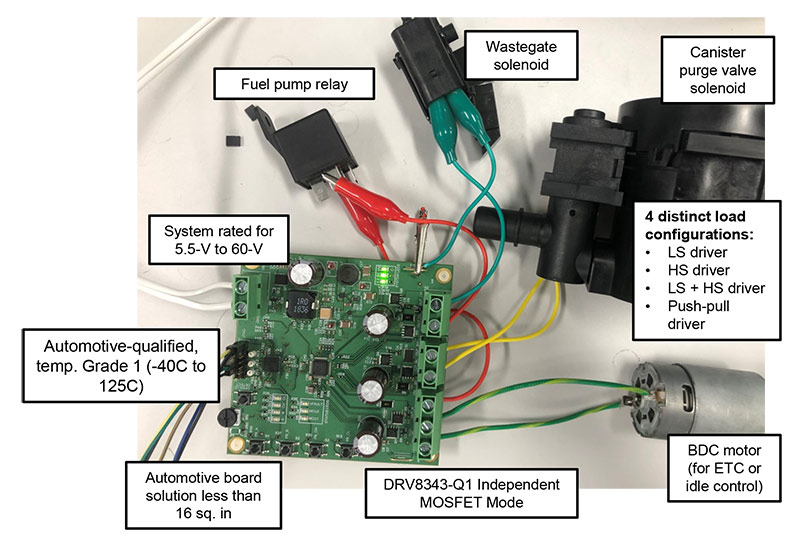 Figure 5 Engine load interface solution for 12-V and 24-V automotive systems
Figure 5 Engine load interface solution for 12-V and 24-V automotive systemsNow that I have shared the various options TI offers to interface with engine loads, I should mention that there is also plenty of content and knowledge available on TI.com to assist you in your engine platform printed circuit board design. Although ICEs are mechanically complex, they don’t have to be electrically!
What features are most important for your engine platform design? Please share in the comments below so that we can highlight these in our devices. Make sure to check out our Gasoline and Diesel Engine platform page for products and designs to make your engine platform design the way you want it.
Additional resources
- Read the application reports, “Using DRV to Drive Solenoids – DRV8876/DRV8702-Q1/DRV8343-Q1” and “Automotive Reverse Polarity Protection.”
- Download the DRV8343-Q1 and DRV8873-Q1 data sheets.
- Watch the YouTube video “Motor Drivers in Engine Control Units” from Texas Instruments